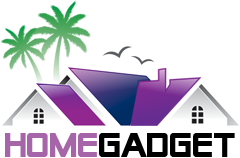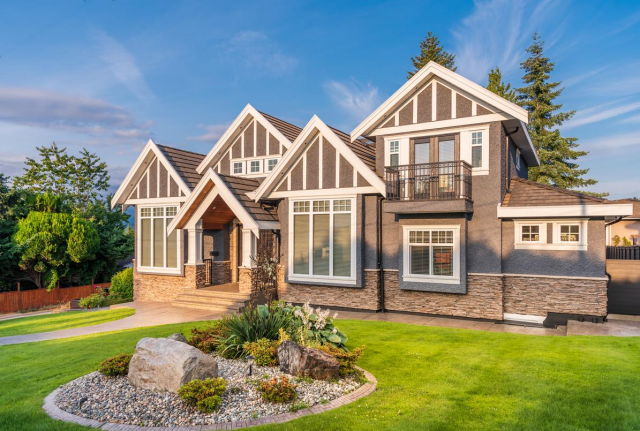Its a concern for people making houses to choose the best type of siding, and deciding the right siding is challenging. There are many choices, and we must consider all of them. When deciding on your home’s exterior siding, you should consider multiple factors. It would help to prioritize durability, aesthetic value, cost, and maintenance. These sidings come with different advantages and disadvantages. Let’s review Best Type Of Siding For Your Home them all in detail.
5 Best Type Of Siding For Your Home In 2022
Looking for the Best Type Of Sidings For Your Home to make it look awesome? Have a look at these sidings.
Vinyl Sidings

Best Type Of Siding For Your Home Vinyl sidings are one of the most popular choices in the United States. It’s a form of waterproof plastic siding typically seen on smaller homes and apartment buildings (especially in areas with many precipitation and storms). It comes in various colors, making it a visually appealing exterior choice.
Vinyl siding is a budget-friendly option. I install it in a typical 2,000-square-foot single-family home that costs $6,150 and $15,900.
Because vinyl sidings are made of polyvinyl chloride or PVC, it is fire resistant. PVC will not burn until it reaches a temperature of roughly 750 degrees Fahrenheit. Burning PVC also demands a large amount of oxygen. That means fires are more difficult to start and more difficult to maintain.
Pros
- Resistant to fire up to 750 degrees
- A vast range of types to choose from
- Affordable
Cons
- It has a greater propensity for fading than other types (10 to 15 years, depending on the climate)
- Susceptible to extreme weather and UV light exposure
- It is subject to mold growth and rotting sheathing if not placed with a waterproof covering.
Wood Sidings

One of the most traditional exterior sidings materials is wood. It’s versatile because wood sidings can be stained or painted to look exactly how you want. It’s also available in various styles, including shingles and vertical boards, so homeowners may get the aesthetic they desire. Depending on the arrangement, wood siding might cost anywhere from $7,000 to $23,000.
While wood siding may appear appealing, it is a fire hazard. Wood is flammable, which suggests it can catch fire when exposed to high temperatures. When wood sidings catch fire, flames can move up the wall and into the house. Wood sidings also require regular maintenance and repainting over time. Painting professionals recommend a fresh coat of paint every three to four years. Wood siding can make final for 20 to 40 years with good care before needing to be replaced.
TIP: Because wood is flammable, it will readily catch fire if exposed to high temperatures. One option for homeowners is to apply a flame retardant chemical to the siding, but this comes at an added cost.
Pros
- Provides a timeless look in a range of designs.
- One of the more environmentally friendly solutions
- Can be more versatile and customized than other forms of siding (because of the natural and non-toxic techniques used to manufacture wood siding, as compared to the processes used to make vinyl siding, for example)
Cons
- Combustible and a fire hazard
- Inadequate durability
- Requires periodic renovation
Metal Sidings

Many people only think of metal as a roofing material, but it’s also becoming popular as an exterior siding option. It’s durable, simple to install, and comes in various materials, including aluminum and steel. Metal siding requires almost no maintenance once it is installed.
Metal siding is long-lasting and resistant to harsh weather such as snow and extreme temperatures. Metal siding, unlike wood siding, does not warp, rot, or become infested with insects. On the other hand, metal is a poor insulator and does not provide soundproofing. Metal siding may not be the greatest choice if you live in a location with a harsh climate and are sensitive to outside noises.
Pros
- Extremely long-lasting and low-maintenance
- Easy to install
- Resistant to pests and fire.
Cons
- Offers minimal insulation
- It is not soundproof; this will be a problem if you reside in a location with extreme weather or if you’re sensitive to outside noises.
Fiber Cement Sidings

Best Type Of Siding Fiber cement sidings are a sturdy and long-lasting exterior siding option for people searching for something that lasts at least 30 years. Fiber cement sidings are best for people who live in a severe climate since they can withstand extreme weather situations such as hail and strong winds.
A blend of wood pulp and cement is used to make fiber cement siding. Fiber Cement Siding has the same strength as cement but is more versatile in terms of appearance. Fiber cement siding can mimic various other siding materials, including wood. The most significant disadvantage of fiber cement siding is the high installation cost. This is because the installation process necessitates a large number of people and, as a result, labor time. Fiber cement siding will almost certainly need the services of an expert, so budget accordingly.
Pros
- Long-lasting, especially in inclement weather
- Variety of designs
- Low-maintenance
Cons
- Installing it is costly.
- Moisture absorbent
- Inefficient in terms of energy usage
Brick Sidings

Best Type Of Siding Brick is a classic and timeless exterior sidings material that has long been a standard in the construction industry due to its durability. Unlike wood or vinyl sidings, which fade in the sun, brick siding does not need to be repainted regularly. Brick is a low-maintenance exterior siding option that can last for more than a hundred years.
And Brick also has a greater resale value than other exterior siding options, so it’s a smart choice if you’re looking to transform a house into an investment property. According to Acme Brick, brick homes gain around $4,000 in value over wood or fiber-cement siding homes.
While brick siding outperforms other sidings materials in terms of aesthetics, durability, and strength, it does have one disadvantage: its price. Brick is one of the most costly building materials available. Brick sidings cost between $8,900 to $25,000 for a 2,000-square-foot home.
It also demands the employment of additional materials to ensure its efficiency, such as a waterproof barrier. However, besides these extra features, brick is a perfectly natural and environmentally friendly material. Because bricks are created from natural materials, they have a low carbon footprint. Bricks are also recyclable and biodegradable.
Pros
- Environmentally friendly
- Low-maintenance
- Weather and fire-resistant
Cons
- Costly to install
- Requires a watertight sealant
- Color restrictions
Differential Materials
There are a variety of alternative siding materials to consider. These are some of them:
- Composite: Composite sidings are one of the most lasting forms of sidings, and it comes in a variety of styles.
- Hardie board: Another long-lasting choice, the Hardie board, can be more costly than the other options.
- Stone veneer: It is a lightweight and cost-effective choice, but it is not environmentally friendly because it cannot be recycled.
- Manufactured wood: This sidings choice resembles natural wood but is susceptible to mold and mildew if moisture gets inside.
Conclusion
Sidings are not only a valuable tool for decorating a home, but it’s also a vital safety feature and an investment in the value of your property. Because the durability and cost of siding change depending on the material used, it’s vital to consider the advantages and disadvantages of per material when selecting siding for your home. Contact a local siding specialist to determine which option is ideal for your budget and location.










